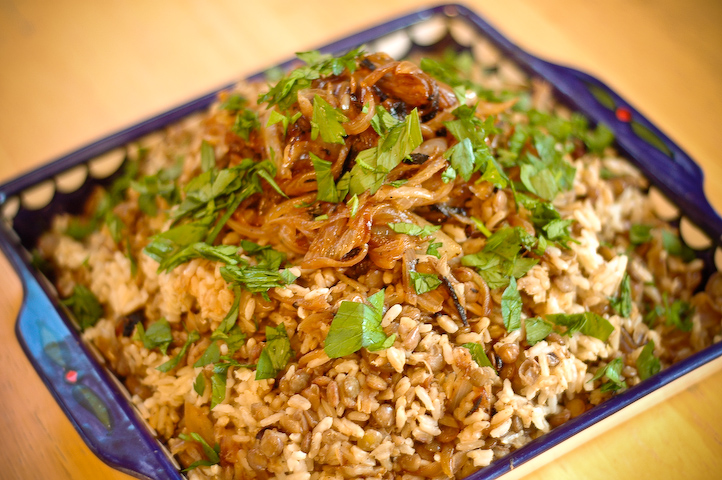Ragù Enriched with Chicken Livers
 Andre Baranowski
|
|
This blog contains recipes of food that I like, entertainment, political insights and commentary on stuff I like or dislike intensely.
 Andre Baranowski
|
|
Merguez lamb patties with golden raisin couscous Gourmet | March 2008
Merguez, the spicy lamb sausages of North Africa, are popular throughout France. These nearly labor-free patties are a quick way to re-create them in your kitchen. The sweetness of the raisin couscous contrasts nicely with the meat's deep spice.
Makes 4 servings
Andrea Albin

1 1/4 teaspoons fennel seeds
1 1/4 pounds ground lamb
3 garlic cloves, minced
2 tablespoons harissa (spicy North African condiment)
1 1/4 teaspoons ground cumin
1 1/4 teaspoons ground coriander
1/4 teaspoon ground cinnamon
1 tablespoon vegetable oil
1 1/4 cups reduced-sodium chicken
broth or water 1/3 cup golden raisins
1 cup couscous
1/2 cup chopped cilantro
Zest of 1 lemon
Equipment: an electric coffee/spice grinder
Accompaniment: harissa or hot sauce

Toast fennel seeds in a small heavy skillet over medium heat until fragrant and
a shade darker, about 1 minute. Grind to a fine powder in grinder.Mix together lamb, garlic, harissa, spices (including fennel), and 1/2 teaspoon
salt thoroughly with your hands (do not overmix). Form into 4 oval patties (about 3/4 inch thick).Heat oil in a 12-inch heavy skillet over medium-high heat until it shimmers,
then cook patties, turning once, about 9 minutes total for medium-rare.

Mujadara (Rice, Lentils and Caramelized Onion Pilaf)
Mujadara (also spelled Mujadarah or several other variations) is delicious, inexpensive, simple to make, and one of my wife's favorite foods. Since she got us this beautiful new serving platter I felt a batch was overdue. It is simply a mixture of rice and perfectly cooked lentils, spiked with a big dose of caramelized onions and a bit of cumin and cinnamon. It makes a hearty vegetarian one dish meal served with just some Greek yogurt and maybe a cucumber salad, or it can be part of a larger Middle Eastern feast.
Although this dish is very simple, unless you have a lot of leftover caramelized onions on hand, it does take a good bit of time. If you are following the recipe below you might want to double the onions and make extra to freeze or refrigerate, since they make a flavorful addition to many meals.
Mujadarah (Rice, Lentil, and Caramelized Onion Pilaf)
Serves 4 as a one dish meal
| Spicy Chicken Stew | |||
| | |||
(Doro Wot) SERVES 4 This stew of chicken and hard-boiled eggs is one of the most recognized dishes of Ethiopia. The key to making its delicious, sweet-and-spicy sauce is to cook the onions slowly until they've caramelized to make a deeply flavored base. This recipe is based on one used by Elizabeth Goshu at her restaurant, Nyala, in Los Angeles. 4 tbsp. nit'r qibe (Ethiopian Spiced Butter), 1. Heat butter in a large straight-sided skillet over medium-low heat. Add onions and cook, stirring occasionally, until deeply caramelized, about 25 minutes. Add garlic and ginger and cook, stirring, until softened, 6–8 minutes. Add berbere and 2 cups water; stir well. Season the chicken all over with salt; nestle the pieces in the skillet. Reduce heat to low and simmer, covered, turning occasionally, until chicken is cooked through, about 40 minutes. 2. Uncover skillet and raise heat to medium-high; simmer to reduce the liquid until it has a thick, gravy-like consistency, about 5 minutes. Add eggs; stir to warm through. Taste and season with more berbere and salt, if necessary. Serve hot with the injera. | |||
| This recipe was first published in Saveur in Issue #110 |


| |||||||||